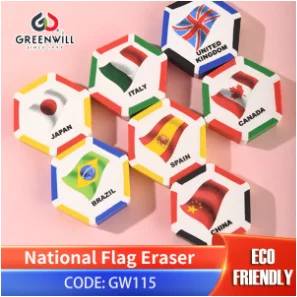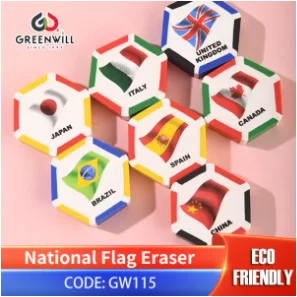Whether an eraser is intact is a true indication of the child's state in class. Deep down, this directly affects the formation of good habits such as listening carefully, writing attentively, and caring for stationery for first graders.
After analyzing the bad habits embodied behind students' destruction of erasers, I designed small activities based on students' interests, using class meetings or acting lessons to guide them to realize their wrong behaviors and help them develop good habits.

The Crying Of Eraser
In the class meeting, I used multimedia to show the six big words "Eraser's cry" and the phonetics of the words. The students looked at me with confused faces at first, I did not say anything else, but learned to use the cartoon voice to start telling the story: "Alas, dear babies, do you know me? No, no, no, I'm not your teacher, I'm a poor little eraser. What? What's so pathetic about me? Alas, you listen to me slowly ......" as I expected, the students were brought into the situation, following my narrative chase up, to the end also consciously took out their own eraser, showing a pathetic expression. By this point, they also understood the theme of my activity today and began to show a thoughtful look.
The Protection Publicity Of Erasers
"Dear students, now you understand what the teacher wants to say. Everyone has an eraser in their stationery box, and you may think that you can buy another eraser when it is gone, but do you know that erasers actually have a life, they work hard to erase your wrong handwriting, but they have to suffer the pain of being split, does it hurt? Today, let's magically transform ourselves and become erasers, okay?" Students naturally raised their heads and asked how to be an eraser, so I asked the children to imagine themselves as erasers and the blackboard, the floor, and the glass as workbooks and guided them to use their own hands to erase the blackboard, the floor, and the glass without danger. And then play the game of pulling and tugging with them to let them feel the discomfort of their own being pulled. "Children, think about it, we are just slightly pulled to feel uncomfortable, let alone you put the eraser 'big piece'." In such a small game, students gradually realize that the eraser should not be destroyed, to stimulate their desire to protect the eraser.
The Protection Agreement Of Eraser
"Students, after the activity just now, do you feel that you are usually too cruel to your erasers? Let's learn from our mistakes, apologize to the erasers, and promise never to bully them again, okay?" Say to the eraser to apologize, in fact, do not let them say "sorry" on the line, but through reading songs, doing "love stationery" class exercise, drawing your heart "beautiful eraser "and other ways to let students really plant the seed of caring for stationery in their hearts. I also take this opportunity to work with students to develop class conventions on not destroying stationery and not wasting paper, pens, and erasers, and print them out and post them on the wall to strengthen students' awareness of caring for stationery and saving resources.

